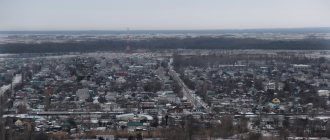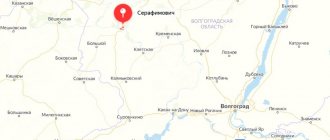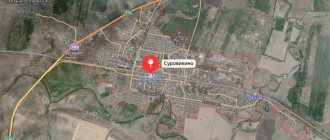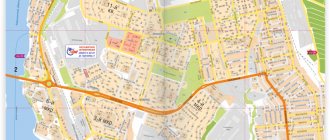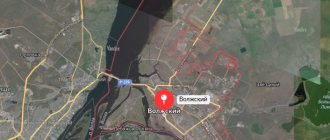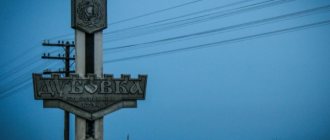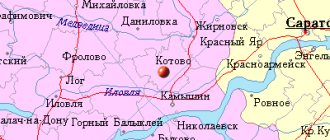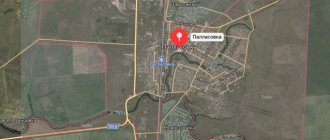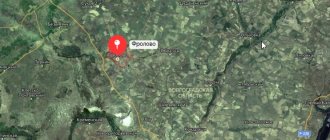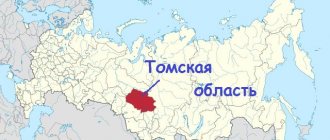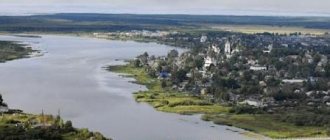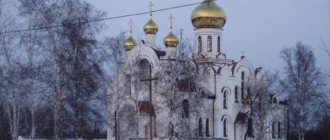Alley of Memory of Defenders of the Fatherland
COVID-19. What is known about the breakthrough drug molnupiravir? Go to article
Leninsk itself did not take part in the fighting in the Great Patriotic War, but during the Battle of Stalingrad, the city was used as a food and weapons base, as it was in the front-line zone. Eight residents of Leninsk and its region received the high award of Hero of the Soviet Union. The city also housed several medical hospitals where more than 15 thousand people received assistance. Therefore, it is not surprising that the city authorities created an Alley of Memory of Defenders of the Fatherland. At the entrance to the alley there is a memorial granite slab in gratitude to the defenders of our fellow countrymen. The alley itself is rather unremarkable and not at all well-groomed. It is clear that the residents themselves are not interested in Memory Alley. They're kicking up the dirt with their cars. They use the alley area for parking or turning around.
Coordinates of the “Alley of Memory to Defenders of the Fatherland” in Leninsk: 48.695160, 45.199036
Job
At the moment, there are quite a lot of job offers in Leninsk and the Leninsky district. Among them are trade and workers, as well as technical specialties. In addition, shepherds, scrap collectors, bakery workers and many others are required.
For example, applicants are invited for the vacancy of “junior inspector of the security department” to supervise convicts. The employee must have a complete secondary education. Work schedule every other day, salary - 20,000 rubles. (advertisement in Avito No. 2166089423).
City Park of Culture and Recreation
Every city has a central park and Leninsk is no exception. True, it’s difficult to call it a park, since no one is involved in it and it’s quite difficult to immediately guess that this is a park. Apart from a small children's playground, there is practically nothing here. On one side of the park there is some kind of large building. It seems to me that it is abandoned, since we did not find any identification signs. Along the adjacent side of the city park stretches the former old house of the merchant Konyakin. We have already written about another house of the Konyakin merchants earlier. It houses the administration of the city of Leninsk. The central library of Leninsk is located in the old merchant's house.
In addition to the children's playground, the park has a memorial stele dedicated to the memory of great fellow countrymen. Here lie the faithful sons of the Soviet people.
- Memorial plate to the revolutionary figure who lived from 1892 to 1950: “Grunt Jan Yanovich.”
- Memorial plate to the lieutenant colonel, who lived from 1898 to 1946: “Dmitry Fedorovich Reznikov.”
- Memorial plate to the colonel who died in the battles for Stalingrad in 1942: “Chernov Daniil Avksentievich.”
Coordinates of the “city park of culture and recreation” in Leninsk: 48.694107, 45.197541
Weather
The climate here is mainly temperate continental. Winters are quite long and moderately cold. In summer the weather is quite warm, although it does not last long.
Within the boundaries of the district there are several natural zones at the same time. Among them is an absolutely unique territory in the desert zone of the dry steppes of the Lower Volga region - the Volga-Akhtuba floodplain.
It is located in the north of the delta formed by these two rivers and is an integral ecosystem, which within the boundaries of the region has divisions of administrative and territorial order. There are only a few similar places in the world, similar in their impact and scale. There is a natural park, 7 tourist bases and 6 hunting grounds. The sphere of tourism and recreation is developed.
House of the Konyakin merchants
The Konyakin merchants arrived in the village of Prishib after the War of 1812. Shortly before the revolution of 1917, the Konyakin merchants received an award in the form of a gold medal with the inscription “The best producer of agricultural products” in Brussels. Merchants made a great impression throughout Europe for the magnificent horses and bulls raised in the Akhtuba floodplain.
After the October Revolution, merchant Alexander Konyakin joined the Soviet government and became its prominent supporter. He also voluntarily handed over all his property to the people, including family jewelry. During the Civil War, Alexander Konyakin worked as the People's Commissar of Food for the 10th Red Army, and spent the last years of his life as a cab driver at the Stalingrad station. Died in 1935. His wife died of tuberculosis in one of the night shelters and outlived her husband by only three years. Their daughter Antonina did not want to renounce her parents and change her last name, which is why she was not accepted into the Komsomol. During the war, she volunteered to go to the front as a nurse. As a result, she was captured and was a prisoner in the Buchenwald camp. She actively participated in the Resistance, for which she subsequently received several awards. She lived in Volgograd until the end of her life. The descendants of the Konyakins still live in Volgograd. The family property was never claimed. Antonina's grandchildren Oleg and Nikolai, as well as daughter Lyudmila, also work as medical workers. The house of the Konyakin merchants is the most beautiful in Leninsk. Currently it belongs to the city administration. The city administration is located directly on the Leninsk city square.
The 1st district congress of councils took place in this building, which adopted a decision on February 16, 1919 to rename the village of Prishib to the city of Leninsk.
Coordinates of the “House of Konyakin Merchants” in Leninsk: 48.693859, 45.199800
Volgograd region – war monuments, chalk mountains and fishing
The large region in the lower reaches of the Volga plays an important strategic role. The rivers flowing through it look like a real crossroads of blue roads. They lead to the White, Baltic, Caspian, Black and Azov seas, and connect the Northern regions of Russia, Ukraine, the Caucasus and the countries of Central Asia. People come here to visit war memorials, go fishing and see unique natural monuments.
The Volgograd region is located 1000 km southeast of Moscow. The Black and Azov Seas are nearby, and they have a huge impact on the local climate. The region is characterized by little snow and short winters. Due to the flat terrain, cold air from the continent easily penetrates into the Volgograd region, and the temperature drops to -10...-11°C.
Mamaev kurgan. View of the monument “The Motherland Calls!” and the sculpture “Stand to the death”
Spring starts early. In March it is already warm, and primroses are blooming with might and main. Summer can be hot. In terms of the abundance of sun, the region is in no way inferior to the famous resorts of Crimea. When the winds bring hot air from the Kazakh steppes, the thermometer rises +39...+45°С.
Autumn is warm and lasts a long time. The first snow falls only in early December. There is not much rainfall during the year. In the Volga region it is only 270-300 mm, and in the north-west of the region - up to 400-500 mm.
There are many museums in the Volgograd region, and the most interesting collections are kept in the regional center. Volgograd residents joke that the museum business in the city began with a cap and a cane, which were granted to local residents by Russian Tsar Peter I. It is noteworthy that unusual royal gifts are still kept in the city hall.
Museum-reserve "Battle of Stalingrad" in Volgograd
Where should you go first? Those interested in history should visit the local history museum. It has existed for more than a hundred years and is located in a three-story building of the former zemstvo government, on Lenin Street, 7.
In the second half of the 18th century, by decree of Empress Catherine II, the first colony of foreign settlers was founded, who came to Russia from various European countries, mainly from Germany. The unusual museum “Old Sarepta” is dedicated to its history and cultural heritage, which is located on Izobilnaya Street, 10. The museum has a library where rare books in German are stored.
A lot of tourists come to the Memorial Historical Museum, dedicated to the distant events of the Civil War. It is located in a red-brick merchant mansion at 10 Gogol Street.
Stolbichi on the banks of the Volga
To look at the famous panorama of the Battle of Stalingrad, you need to go to Marshal Chuikov Street, 47. In addition to a huge painting, the military museum displays samples of weapons and equipment from the Second World War, personal belongings of soldiers and officers, letters from the front and battle flags.
Since the 1960s, the Museum of Fine Arts has been opened at Lenin Avenue, 21. Its halls display works by Volgograd artists and sculptors, works by painters from Europe and a collection of works by the artist Ilya Ivanovich Mashkov, whose name the museum bears. In recent years, new collections have opened in the regional center - the Museum of Weights and Measures (Aviator Highway, 11A) and the Museum of Photographic Cinematics and Photographic Art (Kuznetskaya Street, 73A).
See also: Attractions of Corfu island Greece
There are historical and local history museums in the cities of Nikolaevsk, Volzhsky, Kalach-on-Don, Mikhailovka, Frolovo, Dubovka, Kamyshin, Leninsk Uryupinsk, Pallasovka, in the village of Alekseevskaya, in the villages of Danilovka and Elan. Museums dedicated to the Don Cossacks are open in the village of Ilovlya, the village of Kletskaya and the city of Serafimovich.
The Volgograd region is one of the regions of our country where you can enjoy high-quality fishing and are guaranteed to get a big catch.
Fishermen with spinning rods, donks and fillers can be found on almost all rivers and reservoirs.
The areas around Krasnoslobodsk, the villages of Pokrovka, Leshchev, Barbashi and Gromki are considered catching places on the Volga. Carp, pike, chub, perch and asp bite well here. They actively fish on the upper reach of the Tsimlyansk Reservoir, near Sarpinsky Island, on sand spits and river holes below the regional center and along the banks of the spacious Volgograd Reservoir.
On Akhtuba, the villages of Tsarev and Solodovka are known among fishermen, and on Khopra, the outskirts of the village of Tishanka and the Buzuluk river. There are many crayfish in local reservoirs. True, their catching is allowed only in the fall.
On the Don River, within the borders of the region, they catch catfish, carp, bream, silver crucian carp, pike perch and silver bream, which locals call “zobany” and “kalinka”. The bite is especially active in the first half of summer.
Natural parks and reserves
There are about 40 unique natural areas in the region that have a special protection status.
About fifty more natural sites are waiting to be included in this list.
What places attract tourists the most? Many travelers come to the north of the region to see the unique hilly landscape of the Shcherbakovsky natural park.
Here, mountain oak forests are combined with rocky cliffs, and karst fields with virgin steppes overgrown with grass.
Of particular value are the Urakov Hill, the rocky formations of Shcherbakovskaya Balka and Stolbichi.
Ust-Medveditsky Spaso-Preobrazhensky Monastery near the city of Serafimovich
In the thickets of bushes and forests you can find herds of wild boars and roe deer, elk and European deer. Birds of prey—the Imperial Eagle, the White-tailed Eagle, and the Greater Spotted Eagle—soar above the open spaces where marmots live. Tourists coming to Shcherbakovsky stay in tents and cook food over a fire.
The natural park in the Volga-Akhtuba floodplain attracts lovers of small lakes, eriks, floodplain meadows and oak forests like a magnet. From Volgograd, the road to the park takes only an hour, so on weekends residents of the regional center and the neighboring city of Volzhsky go out into nature.
People come to Akhtuba to see the blooming lake of pink lotuses and watch the birds living near the water - the yellow heron, white stork, laughing gulls and waders. Unlike other protected areas, about 33 thousand people permanently live and farm in this park.
War Memorial Cemetery in Rossoshki
The Donskoy Natural Park is known for the largest chalk mountains in Europe, the purest springs with icy water and an ethnographic museum dedicated to the history and life of the Cossacks.
People go to Eltonsky to see the salt lake Elton, the unique Ulagan salt mountain and the abandoned village of salt miners. In April, bright tulips bloom in large quantities in the steppe.
Fans of archeology are long-time regulars of the Ust-Medveditsky park, which is spread over an area of more than 50 thousand hectares. Along the banks of the rivers flowing here, many burial mounds and sites of Bronze Age nomads have been discovered.
Animal lovers love the Tsimlyansky Sands park, where herds of wild horses - mustangs - graze freely.
The territory of the Nizhnepekhorsky park is often called an open-air museum. It contains floodplain forests with trees more than four hundred years old. In the beautiful Shakinsky oak grove you can see the amazing spring “Bubbling Well”.
The “Union of Fronts” monument in Pyatimorsk, dedicated to the meeting of the troops of the South-Western and Stalingrad fronts
When planning a trip to any of the protected areas of the Volgograd region, you should keep in mind that hunting and fishing are prohibited there. You can set up tents and make fires only in specially designated areas.
What do tourists take away as souvenirs on a trip to the Volgograd region? Many travelers buy miniature copies of the famous monument on Mamayev Kurgan and things with military symbols.
They are sold in souvenir shops on the territory of the memorial and in city kiosks.
Women willingly take light and warm down scarves from skilled Uryupinsk craftswomen.
Practical and high-quality products keep you warm in the cold and look very beautiful.
The Volga city has the unofficial status of the Russian capital of mustard oil, and tourists are happy to buy bottles of oil from Sarepta mustard seeds. They are sold in any grocery store in Volgograd.
Cathedral of the Kazan Icon of the Mother of God in Volgograd
Those with a sweet tooth are sure to bring home chocolates, caramels and marshmallows from the Confip factory. Boxes with photographs of Volgograd sights are especially popular. As delicious souvenirs, tourists take home sweet and juicy Volgograd watermelons, delicate watermelon honey, as well as dried and smoked fish.
Ancient houses of Leninsk
Leninsk is famous for its ancient merchant houses. There are many merchants' houses here. The house of the merchant Grishin, which is now home to the city police.
Coordinates of the merchant Grishin's house in Leninsk: 48.695882, 45.195727
Nearby there are two old houses, which are now occupied by shops and Sberbank. Opposite is some kind of coat of arms or sign. Nearby there is a household goods store, also located in an old house.
Coordinates of a household goods store in an old house in Leninsk: 48.694690, 45.196322
If you go deeper into this street towards the Akhtuba River, then almost at the shore you can see another old, discreet building, where a famous insurance company is currently located. The Akhtuba River is opposite.
Coordinates of an ancient house in Leninsk: 48.693627°, 45.193835°
If you walk along the Akhtuba River, you can come across another old dilapidated house, which is also for sale.
Coordinates of an old dilapidated merchant house in Leninsk: 48.691940°, 45.195130°
Population[ | ]
| 1920[5] | 1926 | 1939[6] |
| 11900 | 14809 | 8525 |
| Population | |||||||
| 1859[7] | 1897[8] | 1900[9] | 1904[10] | 1908[11] | 1911[12] | 1914[13] | 1959[14] |
| 7444 | ↗13 966 | ↗19 007 | ↗20 372 | ↗22 225 | ↗23 356 | ↗25 380 | ↘11 361 |
| 1970[15] | 1979[16] | 1989[17] | 1996[18] | 1998[18] | 2000[18] | 2001[18] | 2002[19] |
| ↗12 062 | ↗12 259 | ↗13 110 | ↗13 900 | ↗14 100 | ↗14 200 | →14 200 | ↗14 866 |
| 2005[18] | 2006[18] | 2007[18] | 2008[20] | 2009[21] | 2010[22] | 2011[18] | 2012[23] |
| ↗15 000 | ↗15 100 | ↗15 300 | ↗15 400 | ↗15 473 | ↗15 504 | ↘15 500 | ↗15 519 |
| 2013[24] | 2014[25] | 2015[26] | 2016[27] | 2017[28] | 2018[29] | 2019[30] | 2020[31] |
| ↘15 473 | ↘15 403 | ↗15 426 | ↘15 353 | ↘15 149 | ↘15 064 | ↘14 626 | ↘14 370 |
| 2021[1] | |||||||
| ↘14 366 | |||||||
As of January 1, 2022, in terms of population, the city was in 802nd place out of 1,116[32]cities of the Russian Federation[33].
Old house of merchant Konyakin
The richest merchants of the village of Prishiba were the Konyakins. They also had the most beautiful house in the village, which currently houses the administration of the city of Leninsk. We have already written about him. But not far from it is Konyakin’s old house, which now houses the city library. Lenin inter-village central regional library. Opening hours are from 10:00 to 18:00, on Sunday from 10:00 to 17:00, and they have a day off on Saturday. There is also a sanitary day on the last Friday of the month. During the Battle of Stalingrad from August 1942 to 1943, military hospitals were located in the old Konyakin house: 1091 AEG, 160 EG, 105 EK, 2949 VG. V.P. was also treated here after being wounded. Nekrasov, participant in the Battle of Stalingrad, writer, winner of the Stalin Prize. In addition to the library, in the house of the Konyakin merchants there is a children's and youth sports school for weightlifting.
Coordinates of the “Old Merchant House of the Konyakins”: 48.694266, 45.196421
Schools
In the city of Leninsk there are three secondary schools. In total, there are 13 more secondary and primary-level schools in the Leninsky district.
School No. 1 in Leninsk was opened in 1917, and was a 1st level (primary) school. In 1920 it was transformed into a 2nd level school, and in 1927 the first graduation of ninth-graders took place. In 1962, a new standard building with 3 floors was erected, in which more than 700 people studied.
A school museum opened in 1966, and in 1994 the school was awarded the honorary title “School of the Year.” In subsequent years, the educational institution repeatedly received honorary titles at various educational competitions.
School No.2 was created in 1946, and in 1951 it received seven-year status. In 1961 it was reorganized into an eight-year one, in 1970 into a ten-year one, and in the same year an extension was made to the building with large, bright offices.
School No. 3 first accepted students in 1976. The very first first-graders were 46 people. In the second half of the 80s, students, led by the director, built a greenhouse, grew flowers, picked tomatoes and weeded vegetables in the collective farm fields. They traveled on racing bicycles and rafted along the river. Akhtuba.
The school had its own sewing workshop, so girls, upon graduating from school, received the profession of “seamstress-machine operator”. In 1995, the school was replenished with pre-lyceum and lyceum classes, technical and humanitarian orientation. In 2000, a technology class was opened, whose students could continue their studies at a technology college.
Central city square
The city of Leninsk is located near the city of Volzhsky and has an interesting history. The settlement arose by order of Catherine II in the 18th century, according to which 1,300 peasant families from central Russia were moved here to produce silk fabrics. One settlement was named "Prishib", the other - "Zaplavnoe". The latter has survived to the present day and remains a village, and from the village of “Prishib” the modern city of Leninsk subsequently arose. You can read more about the history of the city on the wiki. And in this article we will look at the heart of the city “Leninsk” - the “central square”, which is also called the “central square named after Lenin”. During our visit, a zoo came to town.
Leninsk is our favorite city. Leninsk is proud of its fellow countrymen. At the edge of the square there is a plaque of honor for fellow countrymen who represent the pride of Leninsk. Behind the honor board is the “house of the Konyakin merchants.” Currently, the city administration is located here. The central square does not have a city stage, just a very large paved area.
Coordinates of the “central city square named after. Lenin" in Leninsk: 48.694063, 45.199136
Notes
- ↑ 123
www.gks.ru/free_doc/doc_2016/bul_dr/mun_obr2016.rar Population of the Russian Federation by municipalities as of January 1, 2016 - [aonb.astranet.ru/dl/?file=aonb.astranet.ru/kk/pdf/bm000010024.pdf All Astrakhan and the entire Astrakhan region. Memorial book of the Astrakhan province for 1914: 31st year of publication. / Ed. Astrakhan. Lip. Stat. Committee. — Astrakhan: Type. Lip. gov., 1914. - 479 p. (Administrative division of the province. List of the most important settlements...)]
- elib.shpl.ru/ru/nodes/16031-vyp-2-astrahanskaya-guberniya-po-svedeniyam-1859-goda-1861#page/58/mode/inspect/zoom/5 GPIB. Vol. 2: Astrakhan province: ... according to information from 1859. — 186
- aonb.astranet.ru/dl/?file=aonb.astranet.ru/kk/pdf/bm000010032.pdf Memorial book of the Astrakhan province for 1900: year 17 / ed. Lip. Stat. Committee. — Astrakhan: Type. Lip. ed., 1900. - 376 p. Reference information. Col. 43
- aonb.astranet.ru/dl/?file=aonb.astranet.ru/kk/pdf/bm000010032.pdf Memorial book of the Astrakhan province for 1900: year 17 / ed. Lip. Stat. Committee. — Astrakhan: Type. Lip. ed., 1900. - 376 p. Reference information. Col. 37
- vivaldi.nlr.ru/bx000002412/details All Astrakhan and the entire Astrakhan region. Memorial book of the Astrakhan province for 1905: 22nd year of publication / Ed. Astrakhan. Lip. Stat. Committee. — Astrakhan: Steam lips. typ., 1904. - 603 p.
- aonb.astranet.ru/dl/?file=aonb.astranet.ru/kk/pdf/bm000010026.pdf All Astrakhan and the entire Astrakhan region. Memorial book of the Astrakhan province for 1908: 25th year of publication. / ed. Astrakhan. Lip. Stat. Committee. — Astrakhan: Steam lips. typ., 1908. - 374 p.
- aonb.astranet.ru/dl/?file=aonb.astranet.ru/kk/pdf/bm000010029.pdf All Astrakhan and the entire Astrakhan region. Memorial book of the Astrakhan province for 1911: 28th year of publication. / ed. Astrakhan. Lip. Stat. Committee. — Astrakhan: Steam lips. typ., 1911. - 510 p. (Information department. Administrative division of the province)
- aonb.astranet.ru/dl/?file=aonb.astranet.ru/kk/pdf/bm000010024.pdf All Astrakhan and the entire Astrakhan region. Memorial book of the Astrakhan province for 1914: 31st year of publication. / Ed. Astrakhan. Lip. Stat. Committee. — Astrakhan: Type. Lip. gov., 1914. - 479 p.
- [demoscope.ru/weekly/ssp/rus59_reg2.php All-Union Population Census of 1959. The size of the urban population of the RSFSR, its territorial units, urban settlements and urban areas by gender] (Russian). Demoscope Weekly. Retrieved September 25, 2013. [www.webcitation.org/6GDOghWC9 Archived from the original on April 28, 2013].
- [demoscope.ru/weekly/ssp/rus70_reg2.php All-Union Population Census of 1970 The size of the urban population of the RSFSR, its territorial units, urban settlements and urban areas by gender.] (Russian). Demoscope Weekly. Retrieved September 25, 2013. [www.webcitation.org/6GDOiMstp Archived from the original on April 28, 2013].
- [demoscope.ru/weekly/ssp/rus79_reg2.php All-Union Population Census of 1979 The size of the urban population of the RSFSR, its territorial units, urban settlements and urban areas by gender.] (Russian). Demoscope Weekly. Retrieved September 25, 2013. [www.webcitation.org/6GDOjhZ5L Archived from the original on April 28, 2013].
- [demoscope.ru/weekly/ssp/rus89_reg2.php All-Union Population Census of 1989. Urban population]. [www.webcitation.org/617x0o0Pa Archived from the original on August 22, 2011].
- ↑ 12345678
www.MojGorod.ru/volgorad_obl/leninsk/index.html People's encyclopedia “My City”. Leninsk (Volgograd region) - [www.perepis2002.ru/ct/doc/1_TOM_01_04.xls All-Russian Population Census 2002. Volume. 1, table 4. Population of Russia, federal districts, constituent entities of the Russian Federation, districts, urban settlements, rural settlements - regional centers and rural settlements with a population of 3 thousand or more]. [www.webcitation.org/65AdCU0q3 Archived from the original on February 3, 2012].
- [www.gks.ru/bgd/regl/b08_14t/IssWWW.exe/Stg/ug/12.htm Cities of the Volgograd region (number of inhabitants - estimate as of January 1, 2008, thousand people)]. Retrieved June 10, 2016. [www.webcitation.org/6iAPnDR9L Archived from the original on June 10, 2016].
- [www.gks.ru/bgd/regl/B09_109/IssWWW.exe/Stg/d01/tabl-21-09.xls Number of permanent population of the Russian Federation by cities, urban-type settlements and districts as of January 1, 2009]. Retrieved January 2, 2014. [www.webcitation.org/6MJmu0z1u Archived from the original on January 2, 2014].
- volgastat.gks.ru/wps/wcm/connect/rosstat_ts/volgastat/resources/fb8a0f004fe3ed6b85a4edd8c740ec4f/t1_14.pdf All-Russian Population Census 2010. Population of urban districts, municipal districts, urban and rural settlements, urban and rural settlements of the Volgograd region
- [www.gks.ru/free_doc/doc_2012/bul_dr/mun_obr2012.rar Population of the Russian Federation by municipalities. Table 35. Estimated resident population as of January 1, 2012]. Retrieved May 31, 2014. [www.webcitation.org/6PyOWbdMc Archived from the original on May 31, 2014].
- [www.gks.ru/free_doc/doc_2013/bul_dr/mun_obr2013.rar Population of the Russian Federation by municipalities as of January 1, 2013. - M.: Federal State Statistics Service Rosstat, 2013. - 528 p. (Table 33. Population of urban districts, municipal districts, urban and rural settlements, urban settlements, rural settlements)]. Retrieved November 16, 2013. [www.webcitation.org/6LAdCWSxH Archived from the original on November 16, 2013].
- [www.gks.ru/free_doc/doc_2014/bul_dr/mun_obr2014.rar Table 33. Population of the Russian Federation by municipalities as of January 1, 2014]. Retrieved August 2, 2014. [www.webcitation.org/6RWqP50QK Archived from the original on August 2, 2014].
- [www.gks.ru/free_doc/doc_2015/bul_dr/mun_obr2015.rar Population of the Russian Federation by municipalities as of January 1, 2015]. Retrieved August 6, 2015. [www.webcitation.org/6aaNzOlFO Archived from the original on August 6, 2015].
- taking into account the cities of Crimea
- [www.gks.ru/free_doc/doc_2016/bul_dr/mun_obr2016.rar Population of the Russian Federation by municipalities as of January 1, 2016. Table “31. Population of cities and towns by federal districts and constituent entities of the Russian Federation as of January 1, 2016.” RAR archive (1.0 MB)]
- Bondarenko A. S., Borodin A. M. (group leader), Loginov I. M., Merinova L. N., Naumenko T. N., Novikov L. N., Smirnov P. N.
Gergiy Pavovich Golovkov // Heroes of Volgograd / Literary adaptation by V. I. Efimov, V. I. Psurtsev, V. R. Slobozhanin, V. S. Smagorinsky; introduction by A. S. Chuyanov. - Volgograd: Nizhne-Volzhskoe book publishing house, 1967. - P. 102. - 471 p. — 25,000 copies.
Church of Andrei Rublev
The wooden Trinity-Andreevskaya Church was closed in 1953, but in 1989 a new one was restored in its place and consecrated in the name of Andrei Rublev. To date, only the altar part has been preserved and is in use. The church is active and regular services are held. The street on which Andrei Rublev's church is located. In bad weather, you must wear rubber boots to get to the church. Church address: Volgograd region, Leninsk, st. XXII Congress of the CPSU, 58. Temple telephone: 8 (84478) 4-33-00.
Coordinates of the “Andrei Rublev Church” in Leninsk: 48.693373, 45.204779
Location
The location of the city of Leninsk is the southeast of the region, the left bank of the river. Akhtuba. From east to west, the length of the district’s borders is 40 km, and from north to south – 96 km.
On all sides, the Leninsky district is surrounded by other regional districts, and only in the southeast does it border with the Astrakhan region. The area it occupies is 4000 square meters. km.
Three rivers and as many large rivers flow through this area. There are about 400 lakes in the floodplain, half of them are commercial lakes.
